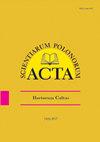评估生物诱导剂对枣椰树(Phoenix dactylifera L., cv. Stameran)抗盐胁迫的影响
IF 0.7
4区 农林科学
Q4 HORTICULTURE
引用次数: 0
摘要
实验采用完全随机设计(CRD)和因子排列法,有三种盐度处理(0 或检查、150 和 300 毫摩尔)和五种细菌激发剂处理(真菌联合体(生物活性)(BFC)、浓度为 1,000 ppm 的真菌激发剂(EL1)、浓度为 2,000 ppm 的真菌激发剂(EL2)、细菌(BS)(安全芽孢杆菌)和细菌(BP)(枯草芽孢杆菌)、在园艺科学实验室中,对真菌和细菌等生物诱导剂对枣椰树抗盐碱胁迫的影响进行了评估。结果表明,在零盐度水平下,B. safensis 的激发剂中过氧化氢含量最低(278 µmol/g)。在 2,000 ppm 浓度的真菌激发剂和零盐度水平、150 mM 盐度水平的 B. safensis 以及 300 mM 盐度水平的真菌复合体处理中,过氧化氢酶活性较高。随着 PAL 和 PPO 酶活性的增加,植物体内的过氧化氢含量也随之降低。施用诱导剂可减轻盐胁迫对枣椰树的影响,但胁迫水平可决定每种诱导剂的影响。本文章由计算机程序翻译,如有差异,请以英文原文为准。
Evaluation of the effect of biological elicitors on the resistance to salinity stress in the date palm (Phoenix dactylifera L., cv. Stameran)
An experiment was conducted in a completely randomized design (CRD) with factorial arrangement with three treatments of salinity (0 or check, 150, and 300 mM), and five bacterial elicitors treatments (fungal consortium (bioactive) (BFC), fungal elicitor at 1,000 ppm concentration (EL1), fungal elicitor at 2,000 ppm concentration (EL2), bacteria (BS) (Bacillus safensis), and bacteria (BP) (Bacillus pumilus)) in the Horticultural Science Laboratory to evaluate the effect of biological elicitors, including fungi and bacteria, on resistance to salinity stress in the date palms. The results showed that the lowest hydrogen peroxide content (278 µmol/g) was found in the elicitor of B. safensis at the zero salinity level. Catalase enzyme activity was higher in the treatments of fungal elicitor at 2,000 ppm concentration and the zero salinity level, B. safensis at the 150 mM salinity level, and fungal consortium at the 300 mM salinity level. The hydrogen peroxide content in the plant decreased as the activity of PAL and PPO enzymes increased. Applying an elicitor may reduce the effects of salinity stress in the date palm, but the stress level could determine the impact of each elicitor.
求助全文
通过发布文献求助,成功后即可免费获取论文全文。
去求助
来源期刊
CiteScore
1.30
自引率
14.30%
发文量
61
审稿时长
4-8 weeks
期刊介绍:
In Acta Scientiarum Polonorum Hortorum Cultus we publish original research papers and review articles containing new and significant information on broad aspects of horticulture and related disciplines. The papers are published in English only, in six issues yearly.

 求助内容:
求助内容: 应助结果提醒方式:
应助结果提醒方式:


